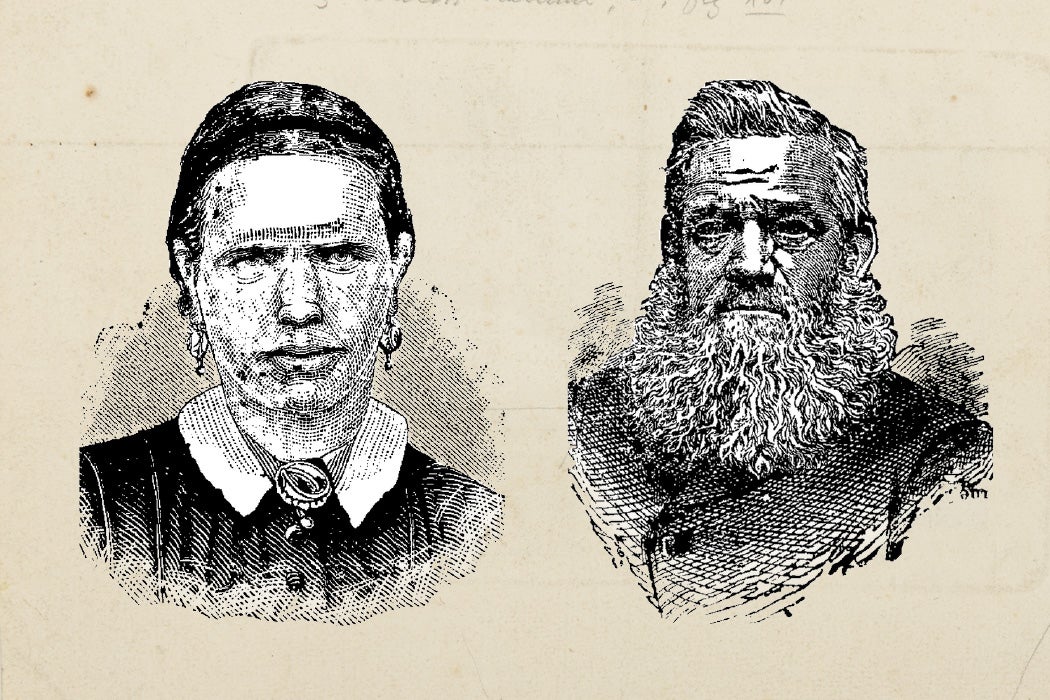Three of Mary Bach’s fingers, hacked off by her murderous husband in 1881, were displayed in a jar for over a century in Bowling Green, Ohio. The exhibit became a landmark of “dark history” for fans of the gruesome and macabre and pretty much put Bowling Green on the weird-internet map. “There are more than three reasons” to visit the museum, proclaimed a t-shirt produced in the early 2000s; local college students referred to the “facts and fingers” of local history.
In 2014, the Wood County History Center and Museum decided to remove the fingers from view and figure out what to do with them. They were concerned about the use and/or exploitation of body parts. They were worried that the sensationalism of “The Fingers in the Jar” had long since eclipsed Mary Bach’s story, including her domestic abuse and murder by Carl Bach.
Mary and Carl Bach were married for fifteen years, until Mary kicked Carl out of the house and got a peace warrant (similar to a restraining order) against him in 1881. Carl had publicly announced his intention to harm her, and he indeed killed her in October of that year. He was found guilty and then, in a retrial, found guilty again before being sent to the gallows in October 1883.
Earliest reports of the murder depicted Mary Bach and her three children with sympathy. But by the time of Carl’s execution, his and his lawyer’s perspective overshadowed Mary’s. The public began to blame her for her own murder, and the media of the day called Carl “pitiable” and a “poor victim.”
Mary’s fingers, hacked off during Carl’s savage assault with a corn knife, were initially preserved by a sheriff as evidence. In the early 1890s, the county’s new courthouse put the fingers and associated items, like the knife, the noose, and the execution hood, on display. The murder was probably memorialized as the most sensational ever in the county. When the courthouse underwent renovations in 1979, what court officials called the “unseemly” Bach display was given to the county museum.
“As a provocative artifact, the fingers bear witness to a tragic event but can simultaneously remind us that domestic homicide is far from a thing in the past,” writes historian Rebecca Mancuso. A former member of the Wood County Historical Society’s Board of Trustees, Mancuso explores the decisions about the disposition of the remains, with which she has been familiar since childhood.
“My own siblings and I frequently begged our parents to walk us through the courthouse to gaze at ‘The Fingers,’ as they were known,” she writes, “and like so many of our friends and neighbors we spun frightful (and highly inaccurate) stories about them.”
Their 2014 removal from public display was met with dismay by some. “The Fingers” had “achieved a cherished place in local identity,” writes Mancuso. They were also a powerful tourist draw, part of the increasing appeal of “‘dark sites,’ or provocative spaces and items associated with atrocity, deviance, or disaster.”
Mancuso notes that the lurid internet fixation on the fingers leads people “further into the realm of folklore.” Public desire certainly influenced the return to exhibition of the fingers and other items from the case in 2020. This time, however, the artifacts, the domestic abuse, and Bach’s murder were contextualized in a discussion emphasizing social welfare.
Weekly Newsletter
Notably, Mary Bach’s remains are not covered by the Native American Graves Protection and Repatriation Act of 1990. An effort to resolve controversies over museum collections of Indigenous human remains, the law specifies that such remains in collections of federally funded institutions must be returned to linear descendants. Mancuso calls this a model of best practice, but no descendants of Bach have come forth to claim the fingers for proper burial.
According to Mancuso, surveys suggest most people oppose having the bodies of their own relatives on display, but they’re fine with the idea of exhibiting the bodies of other peoples’ relatives. Evidently, there’s no Golden Rule for corpses or parts thereof.







